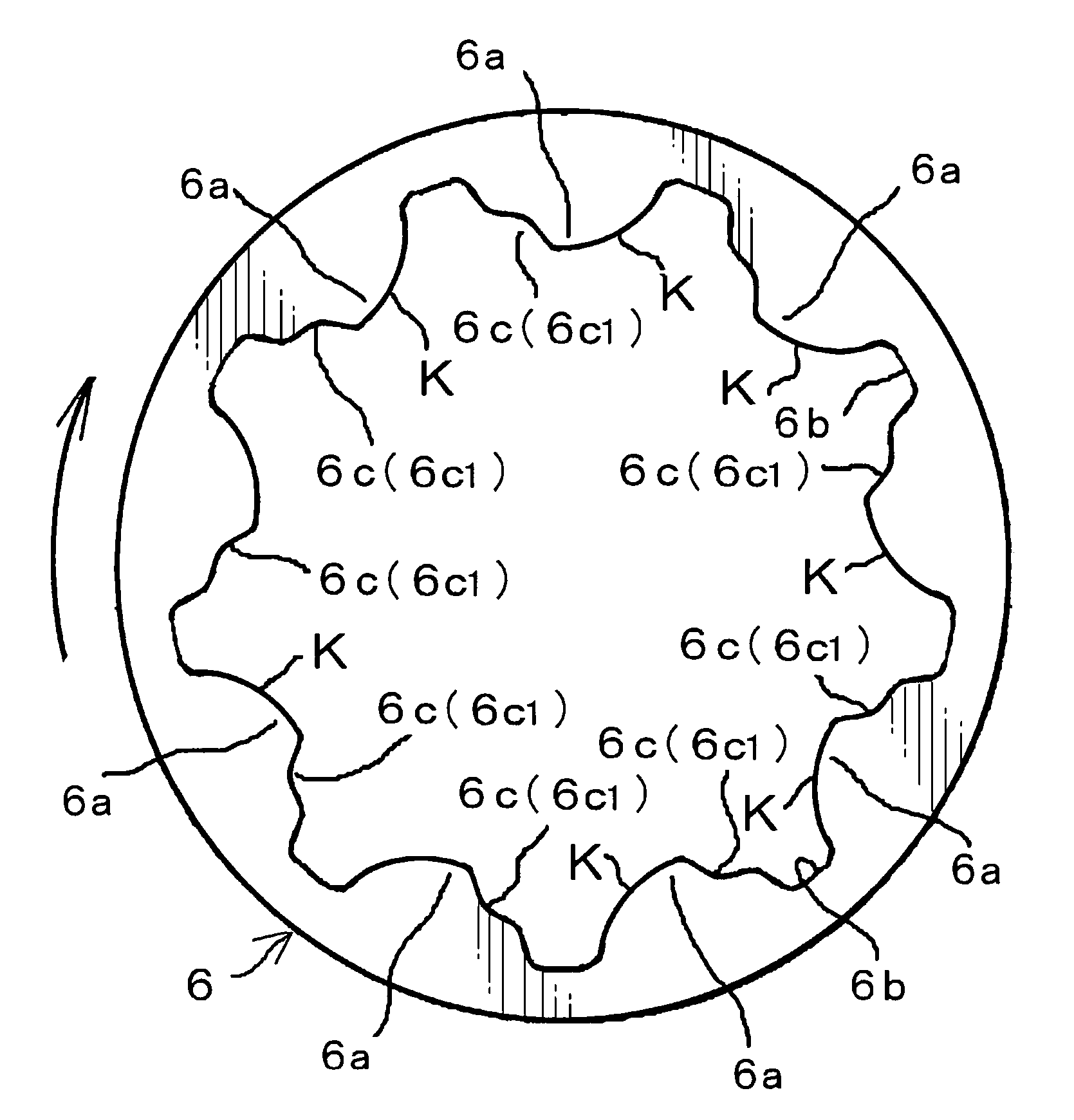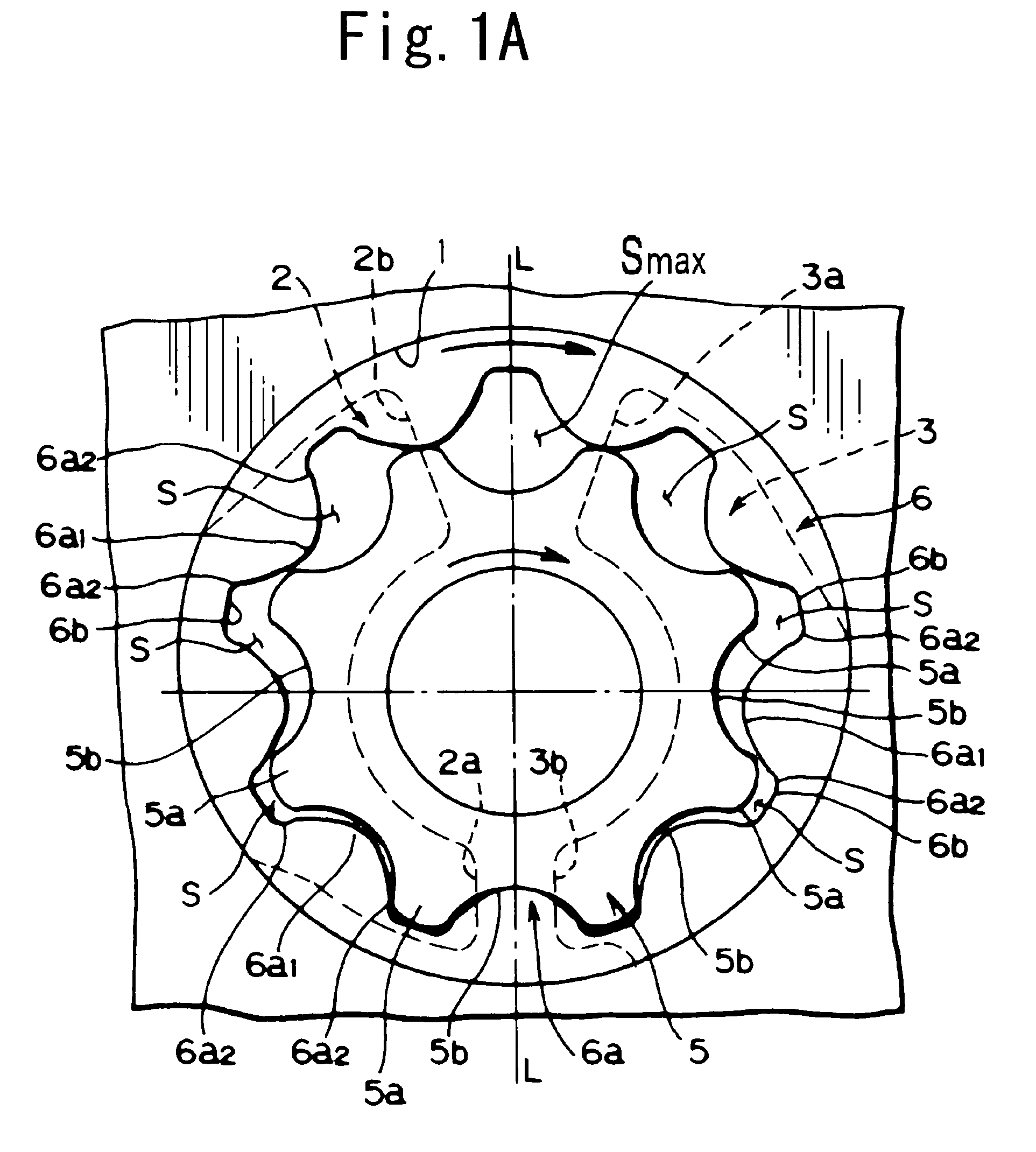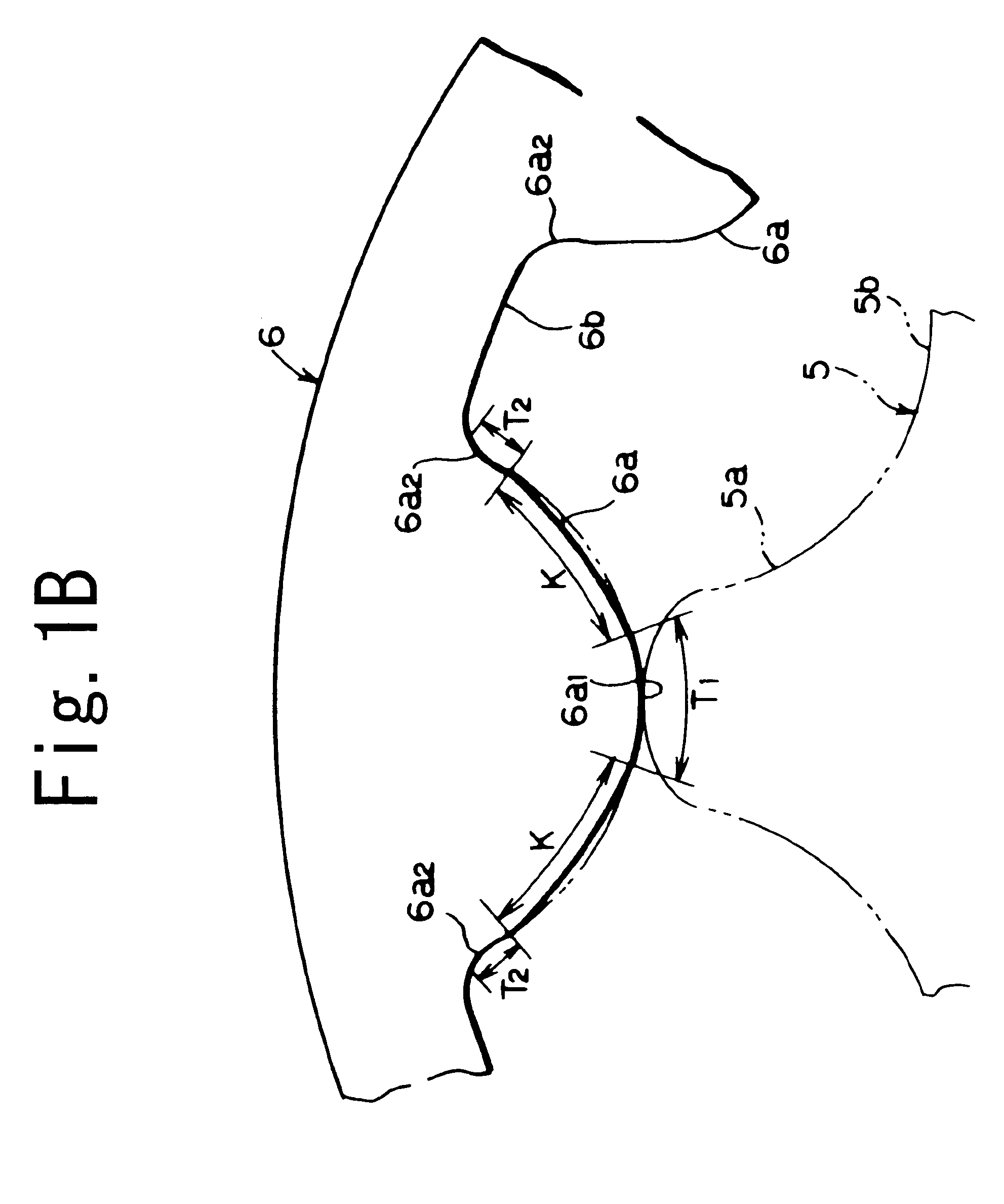Trochoidal oil pump
a technology of trochoidal oil and oil pump, which is applied in the direction of machines/engines, liquid fuel engines, positive displacement liquid engines, etc., can solve the problems of difficult to increase the pump efficiency, difficult to ensure a sufficient size of sealing parts and rectilinear parts, and top parts, so as to reduce noise, reduce discharge pulsation, and facilitate engagement
- Summary
- Abstract
- Description
- Claims
- Application Information
AI Technical Summary
Benefits of technology
Problems solved by technology
Method used
Image
Examples
Embodiment Construction
[0045]Preferred embodiments of the present invention will be described below with reference to the attached figures. As is shown in FIG. 1A, the trochoidal oil pump of the present invention is a pump in which an inner rotor 5 and outer rotor 6 with a trochoidal tooth shape are mounted in a rotor chamber 1 formed inside a pump casing. As is shown in FIG. 7A, an intake port 2 and a discharge port 3 are formed substantially on the side of the outer circumference along the circumferential direction in the rotor chamber 1. The intake port 2 and discharge port 3 are formed in positions that show left-right symmetry with respect to the center of the rotor chamber 1. In concrete terms, as is shown in FIG. 1A, FIG. 7A and the like, if a perpendicular line that passes through the center of the rotor chamber 1 with respect to the lateral direction is taken as a virtual left-right symmetry line L, then the intake port 2 is formed so that this port is disposed on the left side of the left-right ...
PUM
 Login to View More
Login to View More Abstract
Description
Claims
Application Information
 Login to View More
Login to View More - R&D
- Intellectual Property
- Life Sciences
- Materials
- Tech Scout
- Unparalleled Data Quality
- Higher Quality Content
- 60% Fewer Hallucinations
Browse by: Latest US Patents, China's latest patents, Technical Efficacy Thesaurus, Application Domain, Technology Topic, Popular Technical Reports.
© 2025 PatSnap. All rights reserved.Legal|Privacy policy|Modern Slavery Act Transparency Statement|Sitemap|About US| Contact US: help@patsnap.com



